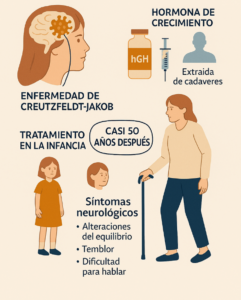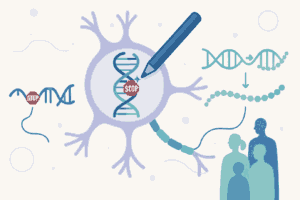Author: Eric Minikel (translated by Joaquín Castilla)
Ionis Pharmaceuticals has announced (see the original letter in English) this morning that it has completed enrolment of PrProfile, its Phase 1/2a clinical trial of ION717, an ASO drug designed to reduce PrP levels in prion diseases. The study is now listed as "Active, not enrolled" on ClinicalTrials.gov.
This trial began recruitment at its first site just over a year ago, on 21 December 2023, with the aim of enrolling 56 participants, a figure that has just been reached.
What does this mean?
For newly diagnosed patients seeking to participate, this is bad news: there are no places available in the trial and, in fact, there is currently no experimental therapy for prion disease being tested clinically anywhere in the world. The company has reiterated that it is not providing the drug for compassionate use.
For all those pinning their hopes on this trial and waiting for results, today's news represents another small step forward. Of course, all enrolled patients still have to continue treatment, so there is no news on how the trial is going, nor will there be for some time. The randomised treatment period is 30 weeks, so if the last participant is receiving their first injection today, the last study visit would be in July 2025.
Extension of the study
Ionis has also added an Open Label Extension (OLE), which allows you to open label extension) of 70 weeks to the trial. This means that all people who were in the trial and who survived to the end of their 30-week randomised period will have the opportunity to receive the active drug, regardless of the group to which they were initially assigned.
OLEs are common in clinical trials and have been a feature of several recent Ionis drug trials, including tofersen for ALS SOD1. According to the company, OLE will allow researchers to collect additional long-term data associated with exposure to ION717.
Recruitment Highlights
Remarkably, of the 372 days from trial opening to closing, the trial was paused for 132 days, from 5 April to 14 August. In 240 days of active recruitment, 56 patients were enrolled, an average of 1 every 4.3 days. The study started with only 1 centre, increased to 11 when the pause occurred in April, and eventually reached 16 centres by the end.
Future perspectives
It is important to remember that this is a Phase 1/2a trial with a primary outcome of safety and a secondary outcome of PrP reduction; it is not designed to determine whether the drug "works" in the sense of slowing disease progression. Preliminary results could be available in 2025, although the exact timing and level of detail to be disclosed remain uncertain.
The rapid recruitment of this trial demonstrates that the prion disease community is actively responding and that it is possible to rapidly enrol participants for prion disease trials, which is crucial for future research.
Link to original article (in English).



